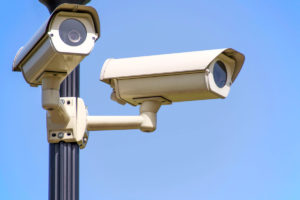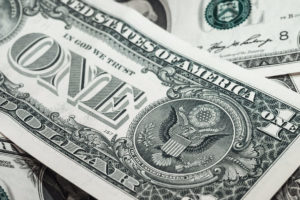 The big retail stores and thousands of convenience stores across the country try to find solutions to tackle shoplifting and employee theft. The retail industry losses account to $42 billion every year, and it doesn’t seem to be stopping anytime soon.
The big retail stores and thousands of convenience stores across the country try to find solutions to tackle shoplifting and employee theft. The retail industry losses account to $42 billion every year, and it doesn’t seem to be stopping anytime soon.
Security measures implemented and adopted by many retailers have given these stores some small wins, but overall the losses are staggering. Inventory adopted by these small stores that are done in real time, and are working in conjunction with software that displays results to the management of these stores instantly, are invaluable to the operation and profitability of the stores. As a deterrent to shoplifting and employee theft, these operative measures are of tremendous help to the management as well.
CCTV cameras that provided a grainy image of the customers or perpetrators are a thing of the past. Now, CCTV cameras provide a clear image of the individual that is easier for police officers and management of these stores to get a clear view of these people. Facial recognition software now provides solutions to these stores that were not available to them before. And although trained personnel has to work in conjunction with these technological advances, the results have greatly improved over the years.
For more about this and other topics, follow the links below.
To stop a thief: Shoplifting is a daily battle for retailers
On any given day, more than $35 million worth of merchandise is stolen from retail stores across the country by shoplifters – amateurs and professionals alike – who steal clothing, jewelry, electronics and a host of other items, including food.
Some sneak quickly and quietly with the merchandise, others make bold getaway attempts.
In Tupelo, the retail and financial hub of Northeast Mississippi, the Tupelo Police Department gets hundreds of reports each year.
In 2014, TPD took 483 reports related to shoplifting, according to TPD Public Information Officer Chuck McDougald. Last year, that number fell to 260. So far this year, the department has taken 162 calls.
“Higher shopping volume days correspond to more shoplifting calls,” he said. “Those include weekends and holidays.”
As for the timing of when shoplifters are busiest, apparently they’re not early risers.
“Afternoons see an increase over mornings,” McDougald said. “Generally, it looks like the busier a store is, the more opportunities there are for someone to steal.”
For retailers like Reed’s, which has four department stores in the region, the key to cutting down on shoplifters is to make sure customer service is prioritized.
Are You Doing Enough to Secure Your Stores?
Theft and robbery continue to rise, but new technology and planning can deter.
NATIONAL REPORT — Whether it’s violent crime, robberies, shoplifting or employee theft, convenience stores have been dealing with store security issues for years. New technology is allowing operators to amp up prevention and react faster to incidents, but in many cases — in c-stores and the entire retail industry — the situation continues to worsen.
“I’ve been involved in the convenience store industry for 40-plus years and the risk of loss has not changed. The most worrisome is robbery, and as c-stores evolved into 24 hours, the violence level increased,” Chris McGoey of McGoey Security Consulting told Convenience Store News.
Robberies are up all-around, specifically in convenience stores, as the latest released FBI statistics show robbery up 16.8 percent in c-stores/gas stations from 2014 to 2015. Rosemary Erickson, researcher, forensic sociologist and president of Athena Research Corp., based in Sioux Falls, S.D., says this is the largest increase she can remember in all the years she has been studying crime. Erickson has helped NACS, the Association for Convenience & Fuel Retailing, develop many of its security resources.
 The National Association for Shoplifting Prevention
The National Association for Shoplifting Prevention

 drawer. IF someone reaches towards the drawer the register should be shut. Registers should be closed immediately following a transaction. If a cashier is sorting through the money or “straightening” they could be slipping money out and pocketing it or dropping money, then putting it in their pocket. Don’t “exchange” bills for patrons, there are some shoplifters who also engage in short changing and confusing cashiers and steal money using this method. Others will argue they did not get the right amount of change and start reaching in the till. If there is a dispute over change a manager needs to conduct a till audit with a partner, in the cash office. If there are enough registers in the store, limit one cashier to one register, when the cashier is done for the day, their money goes in their bag with a supervisor present and the supervisor drops it in the cash cart and rolls it to the cash office. Keep large bills under the till, if they are on top they are easy to see and easier for a grab and run. Consider purchasing locking till covers for registers that have money in them but are not currently in use. There are traveling shoplifting rings and till tap rings that have register keys and will open drawers if no one is paying attention. Till covers prevent someone from getting to the cash even if they open the drawer. Finally, when a register has too many large bills or excessive amounts of money, do a skim and take the excess to the cash office.
drawer. IF someone reaches towards the drawer the register should be shut. Registers should be closed immediately following a transaction. If a cashier is sorting through the money or “straightening” they could be slipping money out and pocketing it or dropping money, then putting it in their pocket. Don’t “exchange” bills for patrons, there are some shoplifters who also engage in short changing and confusing cashiers and steal money using this method. Others will argue they did not get the right amount of change and start reaching in the till. If there is a dispute over change a manager needs to conduct a till audit with a partner, in the cash office. If there are enough registers in the store, limit one cashier to one register, when the cashier is done for the day, their money goes in their bag with a supervisor present and the supervisor drops it in the cash cart and rolls it to the cash office. Keep large bills under the till, if they are on top they are easy to see and easier for a grab and run. Consider purchasing locking till covers for registers that have money in them but are not currently in use. There are traveling shoplifting rings and till tap rings that have register keys and will open drawers if no one is paying attention. Till covers prevent someone from getting to the cash even if they open the drawer. Finally, when a register has too many large bills or excessive amounts of money, do a skim and take the excess to the cash office. Each year retailers take inventory of their merchandise, counting what they have in the store, reconciling that information against sales receipts, vendor credits and receipts and markdowns. Usually the result is some amount of shortage or merchandise shrink due to merchandise that cannot be accounted for and losses due to certain markdowns and damaged products. I have in rare instances seen overages, but those are usually the result of offsets from prior year shortages often attributed to paperwork errors. The store objective each year should be to improve upon the prior year inventory result. Certainly the best case would be to have zero dollar shortages every year, but that is not a realistic expectation. I try to explain to employees that if one package of gum were to be stolen during the year, you have incurred shortage. There are steps a store owner or manager can take to work towards that yearly improvement and shoot for a zero dollar shrinkage year.
Each year retailers take inventory of their merchandise, counting what they have in the store, reconciling that information against sales receipts, vendor credits and receipts and markdowns. Usually the result is some amount of shortage or merchandise shrink due to merchandise that cannot be accounted for and losses due to certain markdowns and damaged products. I have in rare instances seen overages, but those are usually the result of offsets from prior year shortages often attributed to paperwork errors. The store objective each year should be to improve upon the prior year inventory result. Certainly the best case would be to have zero dollar shortages every year, but that is not a realistic expectation. I try to explain to employees that if one package of gum were to be stolen during the year, you have incurred shortage. There are steps a store owner or manager can take to work towards that yearly improvement and shoot for a zero dollar shrinkage year.